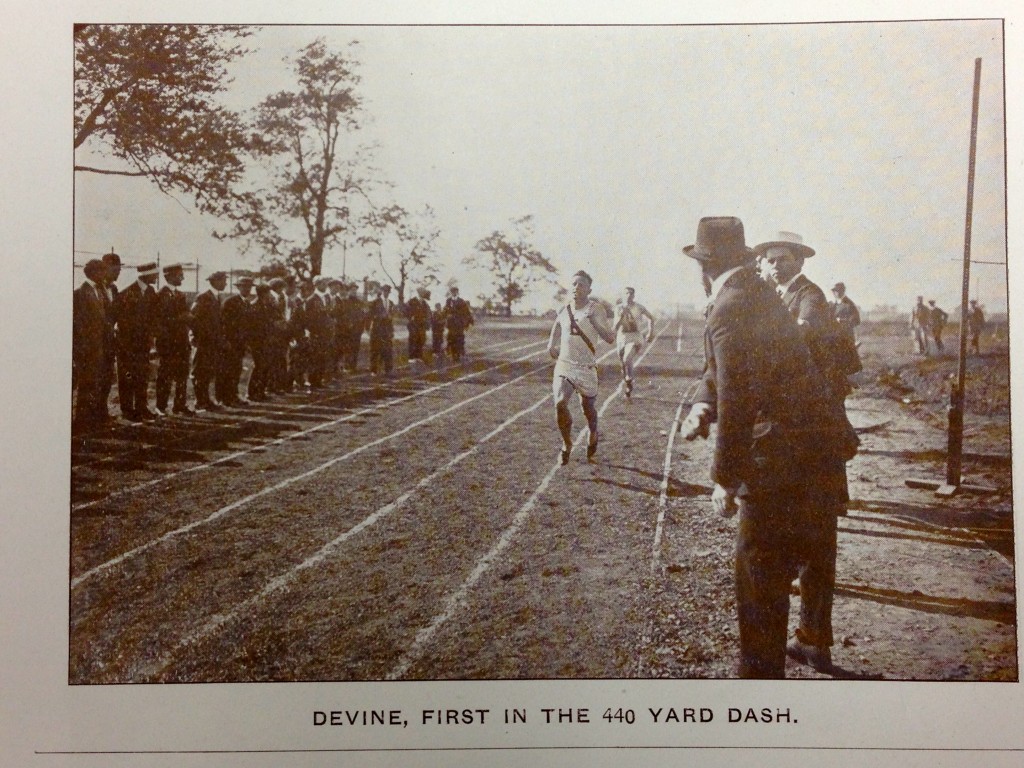Pennsylvania Sports Hall of Fame Nomination
Purchase William E. Dimorier: Servant Leader
Update: 2022 – Although I have nominated Dimorier every year since 2019, he still has not received the honor of being named to the Erie or Pennsylvania sports hall of fame.
Although William Edward Dimorier was born in New York, he lived for more than 40 years in Erie, Pennsylvania. In August 1906, William, a graduate of Colgate University, was hired as head of the English Department at Erie High, also known as Central. He served in many capacities during his career, such as athletics advisor, summer football camp coach, PIAA district director, and fundraising leader for major sports venues in Erie that endure today. William Carney, author of Saga of Erie Sports, wrote, William should be recognized as the man who put Erie sports on the map.

Athletic Field (Ainsworth Field)
The 1912 Erie High yearbook, Spokesman, stated that William, now the faculty advisor to the track and football teams, was hard at work with a committee of prominent businessmen to raise funds for an athletic field. The school board also appropriated funds with the students being charged to match its contribution.
The Spokesman reported that at a fundraising banquet, “Mr. Dimorier, who has worked harder than any other man for the realization of the Athletic Field, was enthusiastically cheered.”
In the spring of 1914, the Athletic Field, on 10 acres of land at 24th& Cranberry, was ready for use by the track team, including senior Oc Anderson, Erie sports legend in basketball and football, as well as track and field.
With the west side of the Athletic Field complete, the center and east-side improvements were to be added over time. In 1922, though, the school board, dealing with severe overcrowding, approved plans for a new junior high school to be built on the east side of the Athletic Field property. Today, the baseball field is still in use, well-known as Ainsworth Field.

Academy High Football
When Academy High School formed in 1919, William was appointed as its boys’ counselor. The Academy High yearbook, the Academe, lists William as the advisor for the new Academy football team. According to John G. Carney, author of Saga of Erie Sports, William helped to establish the Academy football team’s formidable reputation. Carney wrote that “Demmy” should always be remembered as “the man who put Erie sports on the map.” He wrote:
It was through his help that Oc Anderson, Cyril Sullivan, Tommy Doyle, Max Schoenfield, Tommy Dowler, and Bob Orlando went to Colgate. These boys all made good and most of them were chosen on the different All-American teams when they were in college.”
Carney gave William credit for recruiting Central sports legend, Oc Anderson, to Academy as football coach. In the fall of 1920, Anderson, “considered by experts to be one of the greatest forward passers of his era,” led the 1920 Academy team, in its first full season, to a 21-4-3 record.
Veterans Memorial Stadium
In 1920, a group of students went before the Erie school board requesting permission to raise funds for construction of a stadium at Academy High School. This is often written about as the beginning of the stadium project, but there is empirical evidence that William was at work with it as early as 1919.
Many fundraising events followed, such as dances, concerts, and festivals. There was even a three-day horseracing event. Local organizations contributed to the stadium fund, such as the Service Star Mothers, whose children had served or died in the World War. They asked that the stadium be dedicated as a memorial to those who had made the ultimate sacrifice.
In 1923, the Academy yearbook was dedicated to William for his work on the stadium project. The tribute included the following: “There are grave doubts that this ambition would have been fulfilled if he had not taken the initiative.”
On November 11, 1924, Veterans Memorial Stadium was dedicated on Armistice Day, which commemorated the World War I peace treaty between the allies and Germany. This was a fitting occasion for the dedication of a monument to those who fought in the Great War.
The stadium has undergone renovations over the years, and although it now seats only 10,000 people instead of 15,000, it reigns as the largest structure for gathering spectators in Erie.

(photo courtesy of EE Austin)
Sports Administration
In the 1920s and 1930s William served as district chairman of the Pennsylvania Interscholastic Athletic Association (PIAA). Sometimes, he had to take the hard line in managing the district to ensure fair play, such as when schools used overage players or players acted in unsportsmanlike conduct. During his tenure as chairman, he led many new initiatives in the district and remained actively involved even after he was no longer chairman.
William E. Dimorier would be an excellent addition to the Metropolitan Erie Chapter Pennsylvania Sports Hall of Fame because of his dedication to sports programs in the City of Erie and northwest Pennsylvania. He spent much of his free time and every weekend during sports seasons fundraising, leading, and encouraging the young athletes of this area. Erie sports benefited greatly from his contributions and he was certainly an outstanding sportsperson of northwest Pennsylvania who should not be forgotten.
Purchase William E. Dimorier: Servant Leader
Overview of the Dimorier Project




Leave a Reply